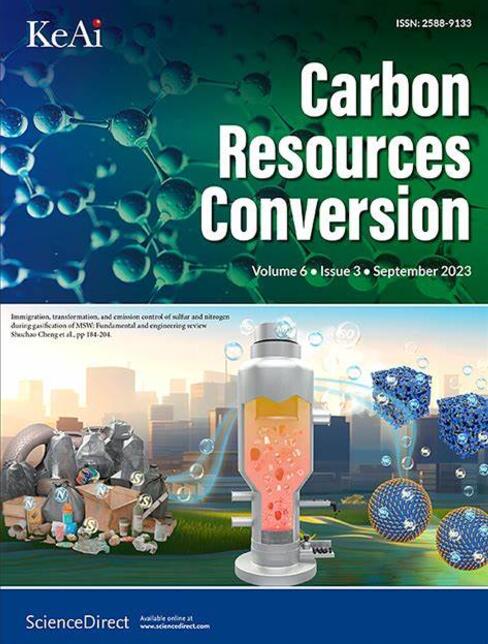各种碳质材料制备的活性炭的孔隙特性和二氧化碳吸附性能
IF 7.5
3区 环境科学与生态学
Q2 ENERGY & FUELS
引用次数: 0
摘要
在这项研究中,我们从各种碳质材料(如生物质和煤)制备了多孔碳样品,并评估了它们的CO2吸附性能。首先以三聚氰胺为氮源,K2CO3为化学活化剂,对含碳材料进行热处理制备活性炭样品。然后,我们详细研究了它们的孔隙特性,并测试了所制备的活性炭样品的CO2吸附性能。我们发现,采用低碳低灰分的材料可以制备孔隙发育良好的活性炭。制备的活性炭样品的比表面积(SSA: 1840 ~ 2640 m2/g)、微孔体积(0.85 ~ 1.46 cm3/g)与CO2吸附量之间存在显著的相关性,说明SSA和微孔体积对CO2吸附性能(400 ~ 530 mg/g)有影响。基于这些结果,我们设计了生产具有高CO2吸附性能的活性炭的指导方针。本文章由计算机程序翻译,如有差异,请以英文原文为准。

Pore properties and CO2 adsorption performance of activated carbon prepared from various carbonaceous materials
In this study we prepared porous carbon samples from various carbonaceous materials, such as biomass and coal, and evaluated their CO2 adsorption performance. We first prepared activated carbon samples by heat treatment of the carbonaceous materials with a mixture of melamine as a nitrogen source and K2CO3 as a chemical activator. We then investigated their pore properties in detail and tested the CO2 adsorption performance of the prepared activated carbon samples. We found that activated carbon with well-developed pores could be prepared using materials with low carbon and ash content. Significant correlation was found among the specific surface area (SSA: 1840–2640 m2/g), micropore (0.85–1.46 cm3/g) volume, and CO2 adsorption of the prepared activated carbon samples, indicating that the SSA and micropore volume affected the CO2 adsorption performance (400–530 mg/g). Based on these results, we devised guidelines for producing activated carbon with high CO2 adsorption performance.
求助全文
通过发布文献求助,成功后即可免费获取论文全文。
去求助
来源期刊

Carbon Resources Conversion
Materials Science-Materials Science (miscellaneous)
CiteScore
9.90
自引率
11.70%
发文量
36
审稿时长
10 weeks
期刊介绍:
Carbon Resources Conversion (CRC) publishes fundamental studies and industrial developments regarding relevant technologies aiming for the clean, efficient, value-added, and low-carbon utilization of carbon-containing resources as fuel for energy and as feedstock for materials or chemicals from, for example, fossil fuels, biomass, syngas, CO2, hydrocarbons, and organic wastes via physical, thermal, chemical, biological, and other technical methods. CRC also publishes scientific and engineering studies on resource characterization and pretreatment, carbon material innovation and production, clean technologies related to carbon resource conversion and utilization, and various process-supporting technologies, including on-line or off-line measurement and monitoring, modeling, simulations focused on safe and efficient process operation and control, and process and equipment optimization.
 求助内容:
求助内容: 应助结果提醒方式:
应助结果提醒方式:


